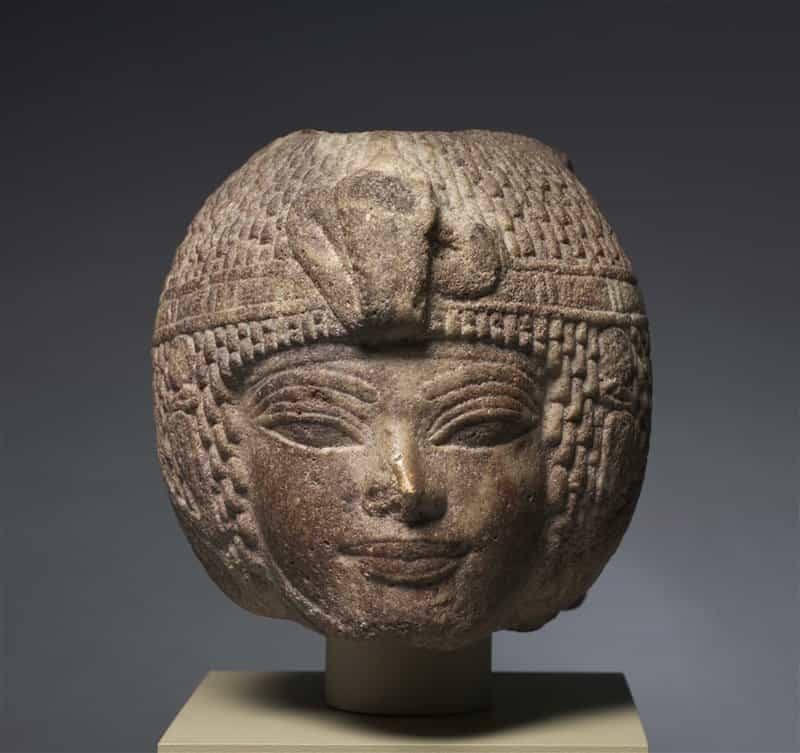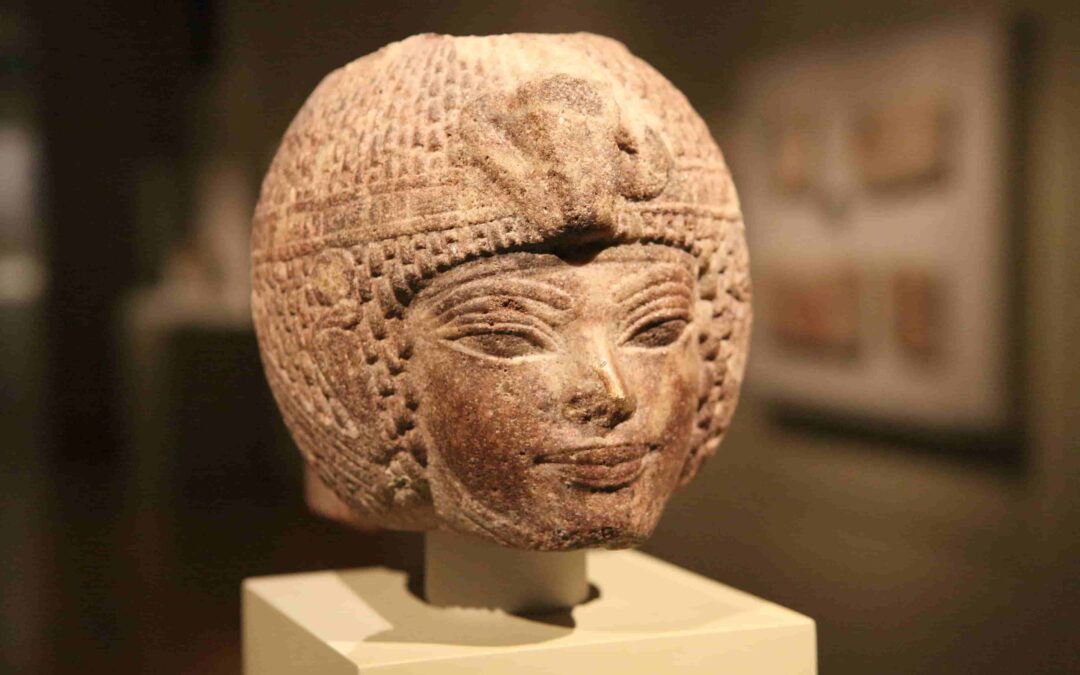King Amenhotep III, despite being close to 50 years old when the portrait was carved, appears remarkably youthful in this head sculpture. Wearing a round, curly wig topped with a diadem adorned with Uraeus (rearing cobras bearing sun disks), his image exudes regal splendor.
The choice of quartzite stone, known for its ruddy hues spanning brown, red, and purple, was a personal favorite of Amenhotep III, who identified himself as the “dazzling sun-disk of all lands.”
Born around 1401 BC, Amenhotep, the son of Thutmose IV and his minor wife Mutemwiya, later commissioned the depiction of his divine birth at Luxor Temple, claiming Amun as his true father, manifesting as Thutmose IV to father him with Mutemwiya.
Amenhotep III, despite not being a warrior, led Egypt to its zenith of power. His reign witnessed minimal military expeditions, with only one recorded in year 5 to quell a Nubian revolt.
Preferring diplomacy, Amenhotep III focused on bolstering Egypt’s standing by forging strong ties with the Mittani. Notably, trade agreements were inked with Cyprus, securing a substantial import of timber and copper into Egypt and granting the island exemption from customs duties.
His union with Tiye in the second year of his reign marked her ascent as the great royal wife. Commissioning a series of large scarabs commemorating this event, their backs narrate the union and are scattered throughout the empire.
The head sculpture of Amenhotep III, now housed in the Cleveland Museum of Art.





